-
Executive Summary
-
Market Introduction
-
Market Definition
-
Scope of the Study
- Research Objectives
- Assumptions & Limitations
-
List of Assumptions
-
Markets
-
Structure
-
Market Research Methodology
-
Research Process
-
Primary Research
-
Secondary Research
-
Market Size Estimation
-
Forecast Model
-
Market Dynamics of Global Thermochromic Pigment Market
-
Introduction
-
Drivers
-
Restraints
-
Opportunities
-
Challenges
-
Trends/Technology
-
Market Factor Analysis of Global
-
Thermochromic Pigment Market
-
Supply Chain Analysis
- Raw Material
- Manufacturers/Producers
- Distributors/Retailers/Wholesalers/E-Commerce
- End–User
-
Suppliers
-
Porter’s Five Forces Analysis
- Bargaining Power of Buyers
- Bargaining
- Threat of Substitutes
- Intensity of Competitive
-
Threat of New Entrants
-
Power of Suppliers
-
Rivalry
-
Pricing Analysis
-
Global Thermochromic Pigment Market, by
-
Product
-
Introduction
-
Liquid Crystal Material
- Market
- Market Estimates & Forecast,
-
Estimates & Forecast, 2020−2027
-
by Region, 2020−2027
-
Leuco Dyes
- Market Estimates &
- Market Estimates & Forecast, by Region,
-
Forecast, 2020−2027
-
Inorganic Materials
- Market Estimates & Forecast,
- Market Estimates & Forecast, by Region, 2020−2027
-
Global Thermochromic Pigment Market, by Pigment Type
-
Introduction
-
Reversible Thermochromic Pigments
- Market Estimates & Forecast,
- Market Estimates & Forecast, by Region, 2020−2027
-
Irreversible Thermochromic Pigments
- Market Estimates & Forecast,
- Market Estimates & Forecast, by Region, 2020−2027
-
Global Thermochromic Pigment Market, by End-Use Industry
-
Introduction
-
Food & Beverages
- Market Estimates & Forecast, 2020−2027
-
Paints & Coatings
- Market Estimates & Forecast, 2020−2027
- Market Estimates & Forecast, by Region, 2020−2027
-
Printing
- Market Estimates & Forecast, 2020−2027
- Market
-
Ink
-
Estimates & Forecast, by Region, 2020−2027
-
Paper
- Market
- Market Estimates & Forecast,
-
Estimates & Forecast, 2020−2027
-
by Region, 2020−2027
-
Textile
- Market Estimates & Forecast,
- Market Estimates & Forecast, by Region, 2020−2027
-
Cosmetics
- Market Estimates & Forecast, 2020−2027
-
Market Estimates & Forecast, by Region, 2020−2027
-
Plastic &
- Market Estimates & Forecast, 2020−2027
-
Polymers
-
Market Estimates & Forecast, by Region, 2020−2027
-
Others
- Market Estimates &
-
Market Estimates & Forecast, 2020−2027
-
Forecast, by Region, 2020−2027
-
Global Chromatography Resin Market,
-
by Region
-
Introduction
-
North America
- Market Estimates
- Market Estimates & Forecast, by Product,
- Market Estimates & Forecast, by Pigment Type, 2020−2027
- Market Estimates & Forecast, by End-Use Industry, 2020−2027
- US
-
& Forecast, 2020−2027
-
Market Estimates & Forecast, by Product, 2020−2027
-
Estimates & Forecast, by Pigment Type, 2020−2027
-
& Forecast, by End-Use Industry, 2020−2027
-
Market Estimates & Forecast, 2020−2027
-
Forecast, by Product, 2020−2027
-
by Pigment Type, 2020−2027
-
End-Use Industry, 2020−2027
-
Forecast, 2020−2027
-
Market
-
Market Estimates
-
Canada
-
Market Estimates &
-
Market Estimates & Forecast,
-
Market Estimates & Forecast, by
-
Europe
- Market Estimates &
- Market Estimates & Forecast, by Product,
- Market Estimates & Forecast, by Pigment Type, 2020−2027
- Market Estimates & Forecast, by End-Use Industry, 2020−2027
- Germany
-
Market Estimates & Forecast, by Pigment Type, 2020−2027
-
Estimates & Forecast, by End-Use Industry, 2020−2027
-
& Forecast, by Product, 2020−2027
-
Forecast, by Pigment Type, 2020−2027
-
by End-Use Industry, 2020−2027
-
& Forecast, 2020−2027
-
Product, 2020−2027
-
Type, 2020−2027
-
Market
-
France
-
Market Estimates & Forecast, 2020−2027
-
Market Estimates
-
Market Estimates &
-
Market Estimates & Forecast,
-
Italy
-
Market Estimates
-
Market Estimates & Forecast, by
-
Market Estimates & Forecast, by Pigment
-
Market Estimates & Forecast, by End-Use Industry,
-
Spain
-
Market Estimates & Forecast, 2020−2027
-
Market Estimates & Forecast, by Product,2020−2027
-
Market Estimates & Forecast, by Pigment Type,2020−2027
-
Estimates & Forecast, by End-Use Industry,2020−2027
-
Market Estimates & Forecast, 2020−2027
-
Forecast, by Product,2020−2027
-
by Pigment Type,2020−2027
-
End-Use Industry,2020−2027
-
& Forecast, 2020−2027
-
Product,2020−2027
-
Type,2020−2027
-
Market
-
UK
-
Market Estimates &
-
Market Estimates & Forecast,
-
Market Estimates & Forecast, by
-
Russia
-
Market Estimates
-
Market Estimates & Forecast, by
-
Market Estimates & Forecast, by Pigment
-
Market Estimates & Forecast, by End-Use Industry,2020−2027
-
Poland
-
Market Estimates & Forecast, 2020−2027
-
Market Estimates & Forecast, by Product, 2020−2027
-
Market Estimates & Forecast, by Pigment Type, 2020−2027
-
Market Estimates & Forecast, by End-Use Industry, 2020−2027
-
Rest of Europe
-
Market Estimates & Forecast, 2020−2027
-
Market Estimates & Forecast, by Product, 2020−2027
-
Market Estimates & Forecast, by Pigment Type, 2020−2027
-
Market Estimates & Forecast, by End-Use Industry, 2020−2027
-
Asia-Pacific
- Market Estimates & Forecast, 2020−2027
- Market Estimates
- Market Estimates & Forecast,
- Market Estimates & Forecast, by
- China
- India
-
& Forecast, by Product, 2020−2027
-
by Pigment Type, 2020−2027
-
End-Use Industry, 2020−2027
-
& Forecast, 2020−2027
-
Product, 2020−2027
-
Type, 2020−2027
-
Market Estimates & Forecast, by Pigment Type, 2020−2027
-
Estimates & Forecast, by End-Use Industry, 2020−2027
-
& Forecast, by Product, 2020−2027
-
Forecast, by Pigment Type, 2020−2027
-
by End-Use Industry, 2020−2027
-
Market Estimates & Forecast, 2020−2027
-
Forecast, by Product, 2020−2027
-
by Pigment Type, 2020−2027
-
End-Use Industry, 2020−2027
-
Estimates & Forecast, 2020−2027
-
by Product, 2020−2027
-
Type, 2020−2027
-
Forecast, 2020−2027
-
Market
-
Japan
-
Market Estimates & Forecast, 2020−2027
-
Market Estimates
-
Market Estimates &
-
Market Estimates & Forecast,
-
Australia & New Zealand
-
Market Estimates &
-
Market Estimates & Forecast,
-
Market Estimates & Forecast, by
-
Rest of Asia-Pacific
-
Market
-
Market Estimates & Forecast,
-
Market Estimates & Forecast, by Pigment
-
Market Estimates & Forecast, by End-Use Industry,
-
Middle East & Africa
- Market Estimates &
- Market Estimates & Forecast, by Product,
- Market Estimates & Forecast, by Pigment Type, 2020−2027
- Market Estimates & Forecast, by End-Use Industry, 2020−2027
- GCC
-
Market Estimates & Forecast, by Product, 2020−2027
-
Estimates & Forecast, by Pigment Type, 2020−2027
-
& Forecast, by End-Use Industry, 2020−2027
-
Market Estimates & Forecast, 2020−2027
-
Forecast, by Product, 2020−2027
-
by Pigment Type, 2020−2027
-
End-Use Industry, 2020−2027
-
& Forecast, 2020−2027
-
Product, 2020−2027
-
Type, 2020−2027
-
Market
-
Market Estimates
-
Israel
-
Market Estimates &
-
Market Estimates & Forecast,
-
Market Estimates & Forecast, by
-
North Africa
-
Market Estimates
-
Market Estimates & Forecast, by
-
Market Estimates & Forecast, by Pigment
-
Market Estimates & Forecast, by End-Use Industry,
-
South Africa
-
Market Estimates & Forecast,
-
Market Estimates & Forecast, by Product, 2020−2027
-
Market Estimates & Forecast, by Pigment Type, 2020−2027
-
Market Estimates & Forecast, by End-Use Industry, 2020−2027
-
Rest of Middle East & Africa
-
Market Estimates & Forecast,
-
Market Estimates & Forecast, by Product, 2020−2027
-
Market Estimates & Forecast, by Pigment Type, 2020−2027
-
Market Estimates & Forecast, by End-Use Industry, 2020−2027
-
Latin
- Market Estimates & Forecast, 2020−2027
- Market
- Market Estimates
- Market Estimates &
- Brazil
- Argentina
-
America
-
Estimates & Forecast, by Product, 2020−2027
-
& Forecast, by Pigment Type, 2020−2027
-
Forecast, by End-Use Industry, 2020−2027
-
Estimates & Forecast, 2020−2027
-
by Product, 2020−2027
-
Type, 2020−2027
-
Market Estimates & Forecast, by End-Use Industry, 2020−2027
-
Mexico
-
Market Estimates & Forecast, 2020−2027
-
Market Estimates & Forecast, by Product, 2020−2027
-
Estimates & Forecast, by Pigment Type, 2020−2027
-
& Forecast, by End-Use Industry, 2020−2027
-
Estimates & Forecast, by Product, 2020−2027
-
& Forecast, by Pigment Type, 2020−2027
-
Forecast, by End-Use Industry, 2020−2027
-
Market
-
Market Estimates
-
Rest of Latin America
-
Market Estimates & Forecast, 2020−2027
-
Market
-
Market Estimates
-
Market Estimates &
-
Company Landscape
-
Introduction
-
Market Strategy
-
Key Development Analysis (Expansion/Merger
-
& Acquisitions/Joint Venture/New Product Development/Agreement/Investment)
-
Company Profiles
-
RPM International Inc.
- Company Overview
- Financial Updates
- Product/Business Segment Overview
- Key Developments
- SWOT Analysis
-
Strategy
-
3M
- Company Overview
- Financial Updates
- Product/Business
- Strategy
- Key Developments
-
Segment Overview
-
SWOT Analysis
-
Sherwin Williams
- Company Overview
- Product/Business Segment Overview
- Strategy
- Key Developments
- SWOT Analysis
-
Financial Updates
-
Hammer Packaging,
- Company Overview
- Financial Updates
- Product/Business
- Strategy
- Key Developments
-
Corp.
-
Segment Overview
-
SWOT Analysis
-
NanoMatriX International Limited
- Company Overview
- Financial Updates
- Product/Business Segment Overview
- Key Developments
- SWOT Analysis
-
Strategy
-
Clariant
- Company Overview
- Financial Updates
- Product/Business
- Strategy
- Key Developments
-
Segment Overview
-
SWOT Analysis
-
OliKrom
- Company Overview
- Financial
- Product/Business Segment Overview
- Strategy
- Key Developments
- SWOT Analysis
-
Updates
-
QCR Solutions Corp
- Company Overview
- Financial Updates
- Product/Business
- Strategy
- Key Developments
-
Segment Overview
-
SWOT Analysis
-
LCR Hallcrest LLC
- Company Overview
- Product/Business Segment Overview
- Strategy
- Key Developments
- SWOT Analysis
-
Financial Updates
-
Gem''innov
- Company Overview
- Financial Updates
- Product/Business
- Strategy
- Key Developments
-
Segment Overview
-
SWOT Analysis
-
Other Market Players
- Smarol Industry Co. Ltd.
- Special Effects and Coatings.
-
Conclusion
-
LIST OF TABLES
-
Global Thermochromic Pigment Market: by Region, 2020−2027
-
North America: Thermochromic Pigment Market, by Country, 2020−2027
-
Europe: Thermochromic Pigment Market, by Country, 2020−2027
-
Table
-
Asia-Pacific: Thermochromic Pigment Market. by Country, 2020−2027
-
Table
-
Middle East & Africa: Thermochromic Pigment Market, by Country, 2020−2027
-
Latin America: Thermochromic Pigment Market, by Country, 2020−2027
-
Global Thermochromic Pigment Market Product Market, by Regions, 2020−2027
-
North America: Thermochromic Pigment Market Product Market, by Country,
-
Europe: Thermochromic Pigment Market Product Market,
-
by Country, 2020−2027
-
Table10 Asia-Pacific: Thermochromic Pigment Market
-
Product Market, by Country, 2020−2027
-
Table11 Middle East & Africa:
-
Thermochromic Pigment Market Product Market, by Country, 2020−2027
-
Table12
-
Latin America: Thermochromic Pigment Market Product Market, by Country, 2020−2027
-
Table13 Global Thermochromic Pigment Market Pigment Type Market, by Regions, 2020−2027
-
Table14 North America: Thermochromic Pigment Market Pigment Type Market, by Country,
-
Table15 Europe: Thermochromic Pigment Market Pigment Type Market,
-
by Country, 2020−2027
-
Table16 Asia-Pacific: Thermochromic Pigment Market
-
Pigment Type Market, by Country, 2020−2027
-
Table17 Middle East &
-
Africa: Thermochromic Pigment Market Pigment Type Market, by Country, 2020−2027
-
Table18 Latin America: Thermochromic Pigment Market Pigment Type Market, by Country,
-
Table19 Global Thermochromic Pigment Market End-Use Industry
-
Market, by Regions, 2020−2027
-
Table20 North America: Thermochromic Pigment
-
Market End-Use Industry Market, by Country, 2020−2027
-
Table21 Europe:
-
Thermochromic Pigment Market End-Use Industry Market, by Country, 2020−2027
-
Table22 Asia-Pacific: Thermochromic Pigment Market End-Use Industry Market, by
-
Country, 2020−2027
-
Table23 Middle East & Africa: Thermochromic Pigment
-
Market End-Use Industry Market, by Country, 2020−2027
-
Table24 Latin America:
-
Thermochromic Pigment Market End-Use Industry Market, by Country, 2020−2027
-
Table25 Global Product Market, by Region, 2020−2027
-
Table26 Global
-
Pigment Type Market, by Region, 2020−2027
-
Table27 Global End-Use Industry
-
Market, by Region, 2020−2027
-
Table28 North America: Thermochromic Pigment
-
Market, by Country, 2020−2027
-
Table29 North America: Thermochromic Pigment
-
Market, by Product, 2020−2027
-
Table30 North America: Thermochromic Pigment
-
Market, by Pigment Type, 2020−2027
-
Table31 North America: Thermochromic
-
Pigment Market, by End-Use Industry, 2020−2027
-
Table32 Europe: Thermochromic
-
Pigment Market, by Country, 2020−2027
-
Table33 Europe: Thermochromic Pigment
-
Market, by Product, 2020−2027
-
Table34 Europe: Thermochromic Pigment Market,
-
by Pigment Type, 2020−2027
-
Table35 Europe: Thermochromic Pigment Market,
-
by End-Use Industry, 2020−2027
-
Table36 Asia-Pacific: Thermochromic Pigment
-
Market, by Country, 2020−2027
-
Table37 Asia-Pacific: Thermochromic Pigment
-
Market, by Product, 2020−2027
-
Table38 Asia-Pacific: Thermochromic Pigment
-
Market, by Pigment Type, 2020−2027
-
Table39 Asia-Pacific: Thermochromic
-
Pigment Market, by End-Use Industry, 2020−2027
-
Table40 Middle East &
-
Africa: Thermochromic Pigment Market, by Country, 2020−2027
-
Table41 Middle
-
East & Africa: Thermochromic Pigment Market, by Product, 2020−2027
-
Table42 Middle East & Africa: Thermochromic Pigment Market, by Pigment Type,
-
Table43 Middle East & Africa: Thermochromic Pigment Market,
-
by End-Use Industry, 2020−2027
-
Table44 Latin America: Thermochromic
-
Pigment Market, by Country, 2020−2027
-
Table45 Latin America: Thermochromic
-
Pigment Market, by Product, 2020−2027
-
Table46 Latin America: Thermochromic
-
Pigment Market, by Pigment Type, 2020−2027
-
Table47 Latin America: Thermochromic
-
Pigment Market, by End-Use Industry, 2020−2027
-
LIST OF FIGURES
-
FIGURE
-
Global Thermochromic Pigment Market Segmentation
-
Forecast Research
-
Methodology
-
Five Forces Analysis of Global Thermochromic Pigment Market
-
Value Chain of Global Thermochromic Pigment Market
-
Global
-
Thermochromic Pigment Market, 2020−2027, by Country, 2020
-
Share
-
of Global Thermochromic Pigment Market, by Country, 2020−2027
-
FIGURE
-
Global Thermochromic Pigment Market Size, by Product, 2020
-
Share
-
of Global Thermochromic Pigment Market, by Product, 2020−2027
-
FIGURE
-
Global Thermochromic Pigment Market Size, by Pigment Type, 2020
-
FIGURE10
-
Share of Global Thermochromic Pigment Market, by Pigment Type, 2020−2027
-
FIGURE11 Global Thermochromic Pigment Market Size, by End-Use Industry, 2020
-
FIGURE12 Share of Global Thermochromic Pigment Market, by End-Use Industry, 2020−2027


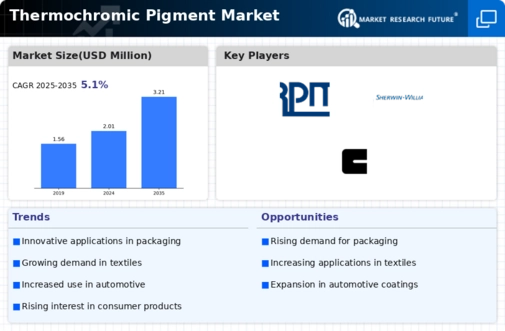
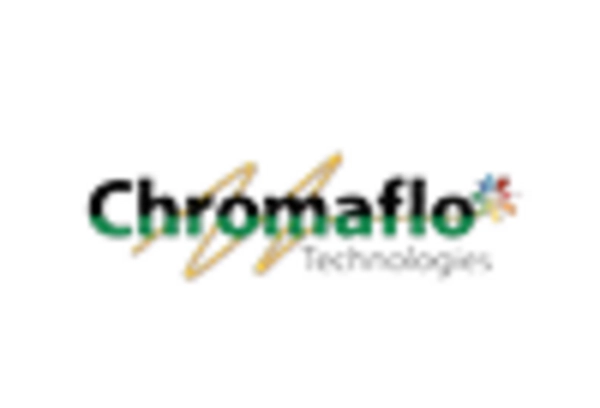
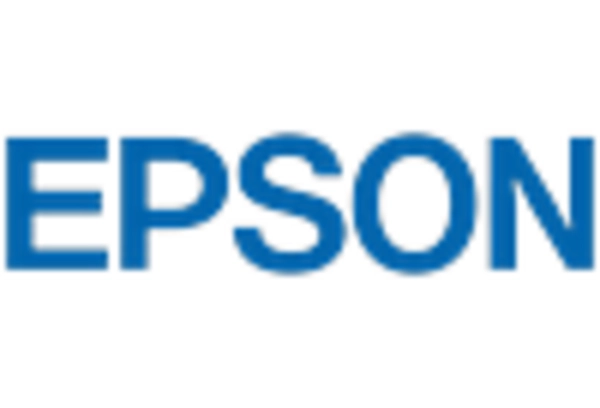
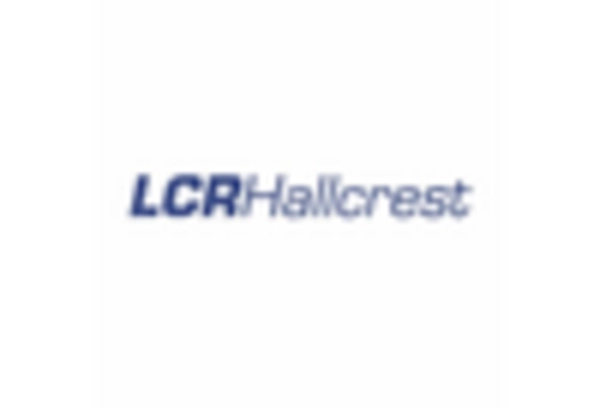

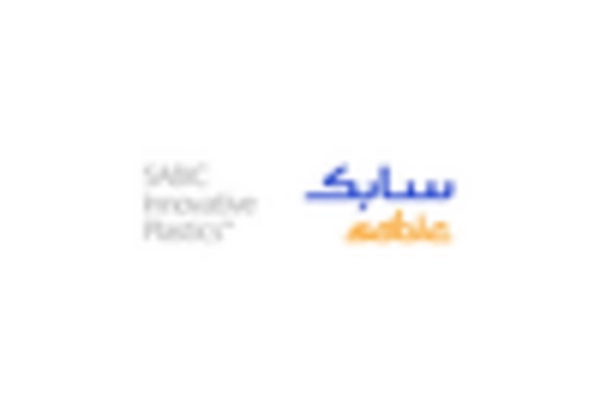
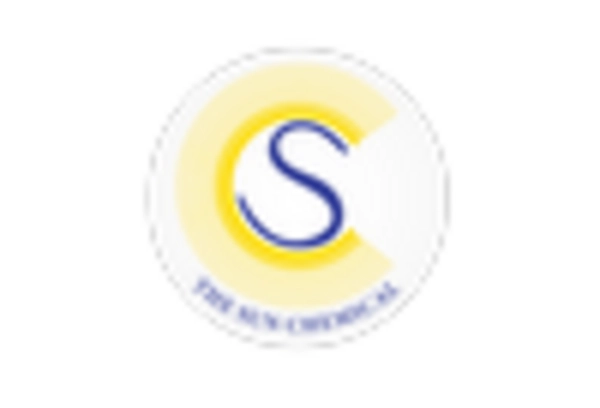









Leave a Comment